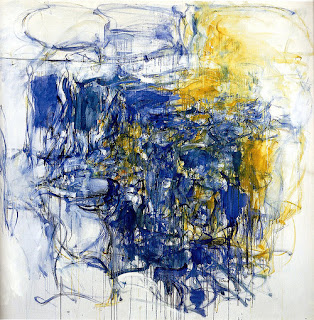Patricia Albers' "Joan Mitchell: Lady Painter"

"Hudson River Day Line," Joan Mitchell An informative biography, full of details about Mitchell's family background (Chicago steel heiress), love affairs and artistic struggles. Her competitive desire to be "one of the boys" of the New York School. Her fear of abandonment and death. Her steadfast love of van Gogh. She painted from the memory of a landscape, until she abstracted it in the idiom of Abstract Expressionism. The writing of the biography is in places too breezy and purple for my taste. The biographer clearly admires her subject, but does not hide her flaws.


